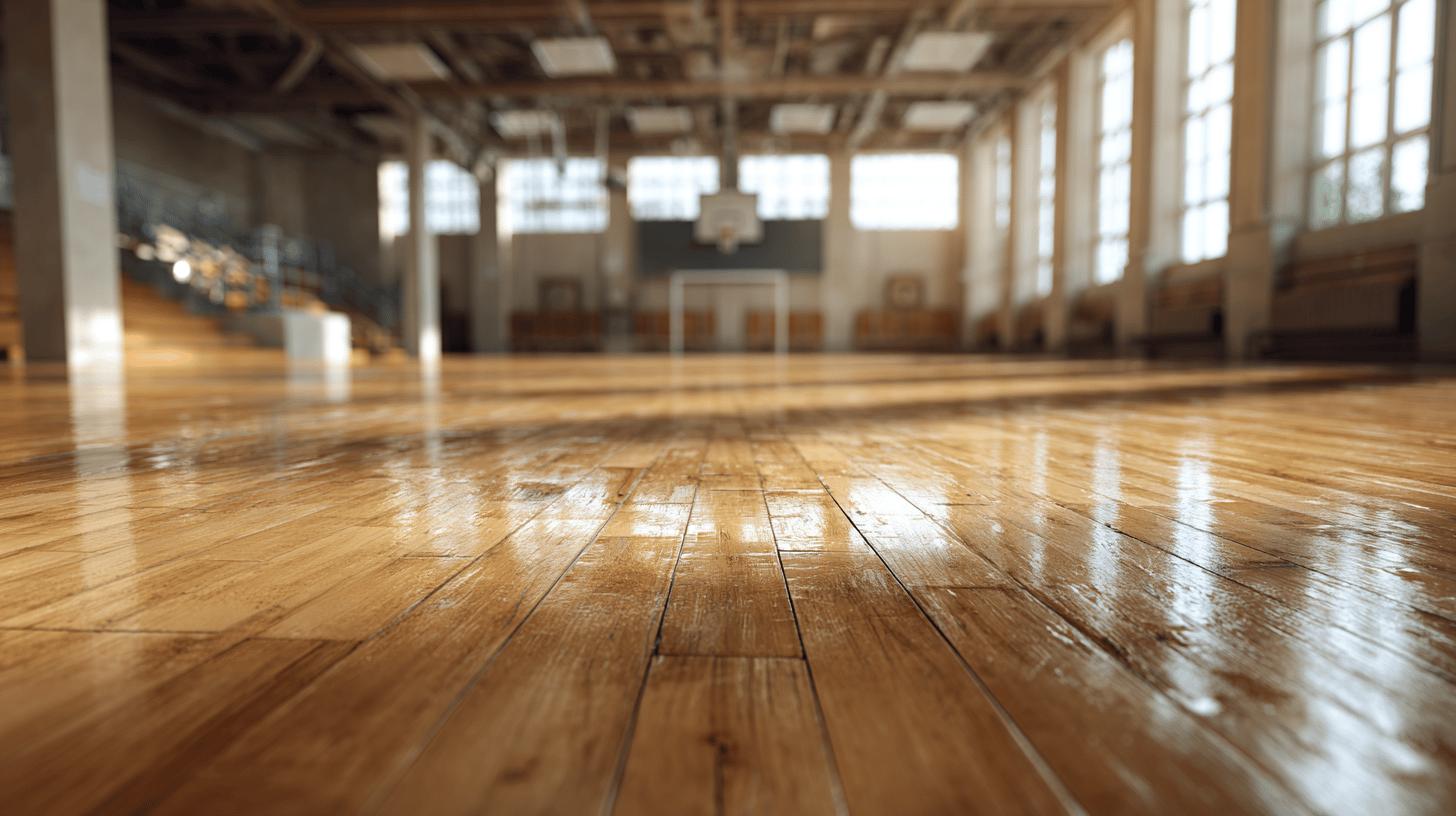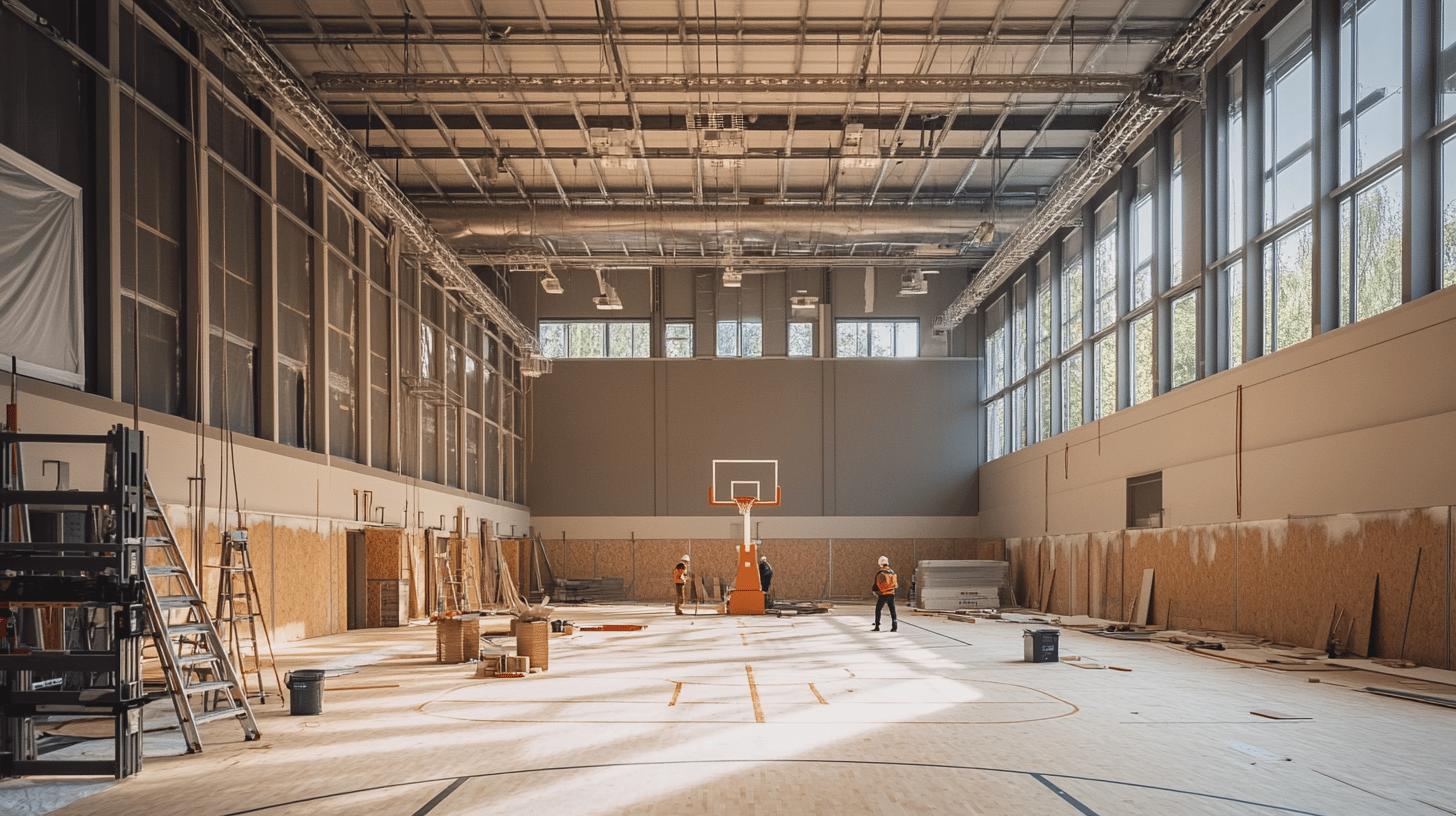In the quest for environmental sustainability, sports facilities find themselves at a crossroads between functional design and eco-friendly practices. Did you know the coatings used in your sports hall could significantly impact air quality and human health? As the world pivots towards environmental responsibility, understanding volatile organic compound (VOC) regulations becomes essential. These regulations, designed to limit emissions from paints and coatings, mandate the selection of low-emission alternatives to ensure safety and compliance. Dive into the intricacies of selecting eco-friendly sports coatings and why this choice is more than just a regulatory obligation—it’s a commitment to a healthier environment for athletes and spectators alike.
Understanding VOC Regulations for Sports Halls
Volatile Organic Compounds (VOCs) are chemical compounds that easily become vapours or gases, found in many building materials including paints and coatings. They significantly impact indoor air quality and pose health risks, leading to the necessity of stringent VOC regulations. These regulations are critical for sports halls, ensuring that the air remains safe for athletes and spectators. They generally set maximum allowable VOC content in coatings used indoors, thus reducing harmful emissions and safeguarding public health.
- United States Environmental Protection Agency (EPA): Establishes national standards for VOC emissions to protect human health and the environment.
- European Commission: Sets directives and regulations to limit VOC emissions within the European Union, including specific limits for architectural coatings.
- World Health Organisation (WHO): Provides guidelines on indoor air quality and VOC exposure limits to protect global health.
- British Coatings Federation (BCF): Offers guidance and support for compliance with VOC regulations specific to the UK coatings industry.
- California Air Resources Board (CARB): Implements strict VOC regulations, often setting benchmarks for other regions globally due to its rigorous standards.
.
In the UK, VOC regulations are governed by directives that set specific limits on the VOC content of paints and coatings used in indoor environments. Compliance with these limits is crucial for sports facilities, as it ensures the health and safety of all users by maintaining better air quality. Adhering to these regulations also aligns with broader environmental responsibilities, reducing the ecological footprint of sports halls and promoting a healthier atmosphere for athletes and spectators alike.
Benefits of Low-Emission Coatings in Sports Facilities
Low-emission coatings have significant health benefits for athletes and spectators, as they enhance indoor air quality by reducing the presence of harmful volatile organic compounds (VOCs). These coatings minimise the release of chemical pollutants, thereby lowering the risk of respiratory issues and other health concerns associated with prolonged exposure to VOCs. Moreover, they contribute to a safer environment, allowing athletes to perform at their best without compromising their wellbeing.
The environmental advantages of using low-emission coatings are substantial:
- Reduced greenhouse gas emissions
- Lower carbon footprint
- Enhanced compliance with indoor air quality standards
- Promotion of sustainable practices
- Decreased energy consumption during production
- Support for eco-friendly building certifications
.
By opting for low-emission coatings, sports facilities can align with broader sustainability goals, promoting environmental responsibility and setting an example for eco-conscious practices in the community. These coatings not only contribute to healthier indoor environments but also reinforce the commitment of sports facilities to sustainability and the wellbeing of all users.
Choosing the Right Low-Emission Coatings for Sports Halls

Selecting the appropriate low-emission coatings for sports halls involves careful consideration of various criteria to ensure both environmental compliance and optimal performance. Key factors include the durability of the coating, its ease of maintenance, and its suitability for high-traffic areas typical of sports facilities. By evaluating these elements, facility managers can make informed decisions that benefit both the environment and the users.
Key Features to Consider
- Durability: Coatings should withstand the wear and tear of sports activities, maintaining their integrity over time. Durable coatings reduce the need for frequent reapplication, offering long-term cost savings and uninterrupted use of the facility.
- Ease of Maintenance: Opt for coatings that facilitate straightforward cleaning and maintenance routines. This aspect is critical to maintaining the appearance and functionality of the sports hall without incurring excessive upkeep costs.
- Traffic Suitability: Given the high foot traffic in sports halls, the selected coatings must be resilient enough to endure continual use. This ensures the floors remain safe and visually appealing, enhancing the overall user experience.
Comparing Product Options
When comparing low-emission coatings, focus on:
- VOC Content: Choose products with low VOC emissions to meet regulatory requirements and improve indoor air quality. Lower VOC content contributes to a healthier environment for athletes and spectators.
- Application Methods: Consider the ease and efficiency of application processes. Some coatings may require specialised equipment or extended curing times, impacting the operational schedule of the sports hall.
- Drying Times: Quick-drying coatings minimise downtime, allowing the facility to resume activities promptly. This is particularly advantageous for busy sports halls that host multiple events.
Ensuring compatibility with existing materials in the sports hall is also vital. Coatings must adhere properly to avoid peeling or flaking, which could compromise the surface’s safety and aesthetics. Consulting with manufacturers and conducting patch tests can help verify compatibility, preventing potential issues and ensuring a seamless application.
.
Ensuring Compliance with VOC Regulations
Maintaining compliance with VOC regulations is crucial for sports facilities to ensure a safe environment and avoid legal complications. Adhering to these regulations not only safeguards athlete health but also aligns with broader environmental laws. By implementing effective compliance strategies, sports halls can meet necessary standards while promoting sustainable practices.
- Consult with manufacturers for specific VOC content information to ensure selected coatings meet regulatory requirements.
- Check local regulations regularly, as VOC limits may vary by region and can change over time.
- Select coatings with recognised environmental certifications to guarantee compliance with industry standards.
- Maintain thorough records of all coatings used and their VOC content to provide evidence of compliance if required.
- Use low-emission products and conduct regular audits to ensure continued adherence to environmental laws.
.
Ventilation improvements may be necessary during the application of low-emission coatings. Adequate airflow helps to disperse any residual VOCs, ensuring a safer environment during and after application. This is particularly important for indoor sports facilities where air circulation may be limited, thus mitigating potential health risks and enhancing the overall air quality.
Environmental and Economic Impact of Low-Emission Coatings
Low-emission coatings are pivotal in enhancing environmental safety within sports halls. They contribute significantly to reducing greenhouse gas emissions and lowering the carbon footprint of these facilities. By minimising the release of volatile organic compounds (VOCs), these coatings promote healthier indoor air quality, aligning with green building certifications and sustainability goals. This eco-conscious approach not only protects the environment but also supports the long-term viability of sports facilities by fostering a safer and healthier atmosphere for athletes and spectators.
| Environmental Impact | Economic Impact |
|---|---|
| Reduced greenhouse gas emissions | Lower operational costs due to energy efficiency |
| Lower carbon footprint | Decreased need for frequent reapplications |
| Improved indoor air quality | Enhanced facility value through compliance with certifications |
Economically, low-emission coatings offer substantial benefits. These coatings require fewer reapplications, resulting in cost savings on materials and labour over time. The reduced need for maintenance allows sports halls to allocate resources more efficiently, enhancing overall operational budgets. Additionally, by meeting the standards for green building certifications, facilities can increase their market value and appeal, attracting more events and users who prioritise sustainability. This dual impact of environmental and economic benefits underscores the importance of opting for low-emission coatings in sports facilities.
Innovations in Low-Emission Coatings for Sports Facilities

Recent technological advancements in low-emission coatings are revolutionising the sports facility industry. These innovations focus on reducing environmental impact while enhancing performance and durability. With an increasing emphasis on sustainability, these coatings offer significant benefits in terms of both functionality and ecological responsibility.
- UV-Curable Coatings: These coatings provide rapid drying times, which is essential for minimising downtime in sports facilities. They also contribute to reduced VOC emissions and offer durable finishes suitable for high-traffic areas.
- Water-Based Acrylic Coatings: Known for their low VOC content, these coatings are eco-friendly and suitable for various surfaces, providing a balance between environmental impact and performance.
- Nano-Technology Enhanced Coatings: Utilising nanoparticles, these coatings improve surface hardness and resistance to wear and tear, extending the lifespan of sports hall floors while maintaining low VOC levels.
- Bio-Based Resin Coatings: Derived from natural sources, these coatings reduce reliance on fossil fuels and offer a sustainable alternative without compromising on quality or performance.
.
Looking ahead, the future of low-emission coatings in sports facilities appears promising. As technological innovations continue to emerge, there will be an increased focus on developing solutions that offer even lower VOC emissions while enhancing durability and performance. These advancements will not only meet regulatory standards but also promote a healthier environment for athletes and spectators, aligning with broader sustainability goals.
Final Words
Navigating VOC regulations is critical for optimising sports hall environments. Utilising low-emission coatings not only enhances indoor air quality but also safeguards athletes’ and spectators’ health. The selection process, while challenging, ensures durable and compliant coatings are chosen, reducing reapplication costs.
Compliance with VOC standards safeguards against legal repercussions and ensures environmental stewardship. Embracing innovations like UV-curable coatings further cements a facility’s commitment to sustainability.
Courtship Floorings remains dedicated to elevating facility standards, contributing positively to both economic and environmental goals. Prioritising VOC regulations when choosing low-emission coatings can create an optimal sports hall experience.
Pick low-VOC seal → Epoxy Floor Coatings
FAQ
Q: What are the current VOC regulations for sports halls?
Current VOC regulations limit volatile organic compounds in indoor coatings, impacting air quality and health. These rules vary regionally, setting maximum VOC content in sports hall coatings to ensure environmental protection.
Q: Why are low-emission coatings beneficial for sports facilities?
Low-emission coatings improve indoor air quality, reducing health risks for athletes and spectators. They also facilitate a healthier environment, aligning with sustainability goals and reducing greenhouse gas emissions.
Q: How do you choose the right low-emission coatings for sports halls?
Choosing the right coating involves evaluating durability, maintenance ease, and traffic suitability. Compare products based on VOC content, application methods, and drying times to ensure compatibility with existing hall materials.
Q: How can sports facilities ensure compliance with VOC regulations?
Compliance strategies include consulting manufacturers for VOC data, reviewing local regulations, and considering ventilation needs during application. These practices help ensure regulatory adherence and environmental safety.
Q: What is the environmental and economic impact of low-emission coatings?
Low-emission coatings reduce greenhouse gas emissions and the carbon footprint, contributing to sustainability. Economically, they offer savings from less frequent reapplications, making them cost-effective for sports facilities.
Q: What innovations exist in low-emission coatings for sports facilities?
Recent innovations include UV-curable coatings, which offer rapid drying and reduced VOC emissions. These technologies promise durable finishes and represent the future of eco-friendly solutions in the coating industry.


